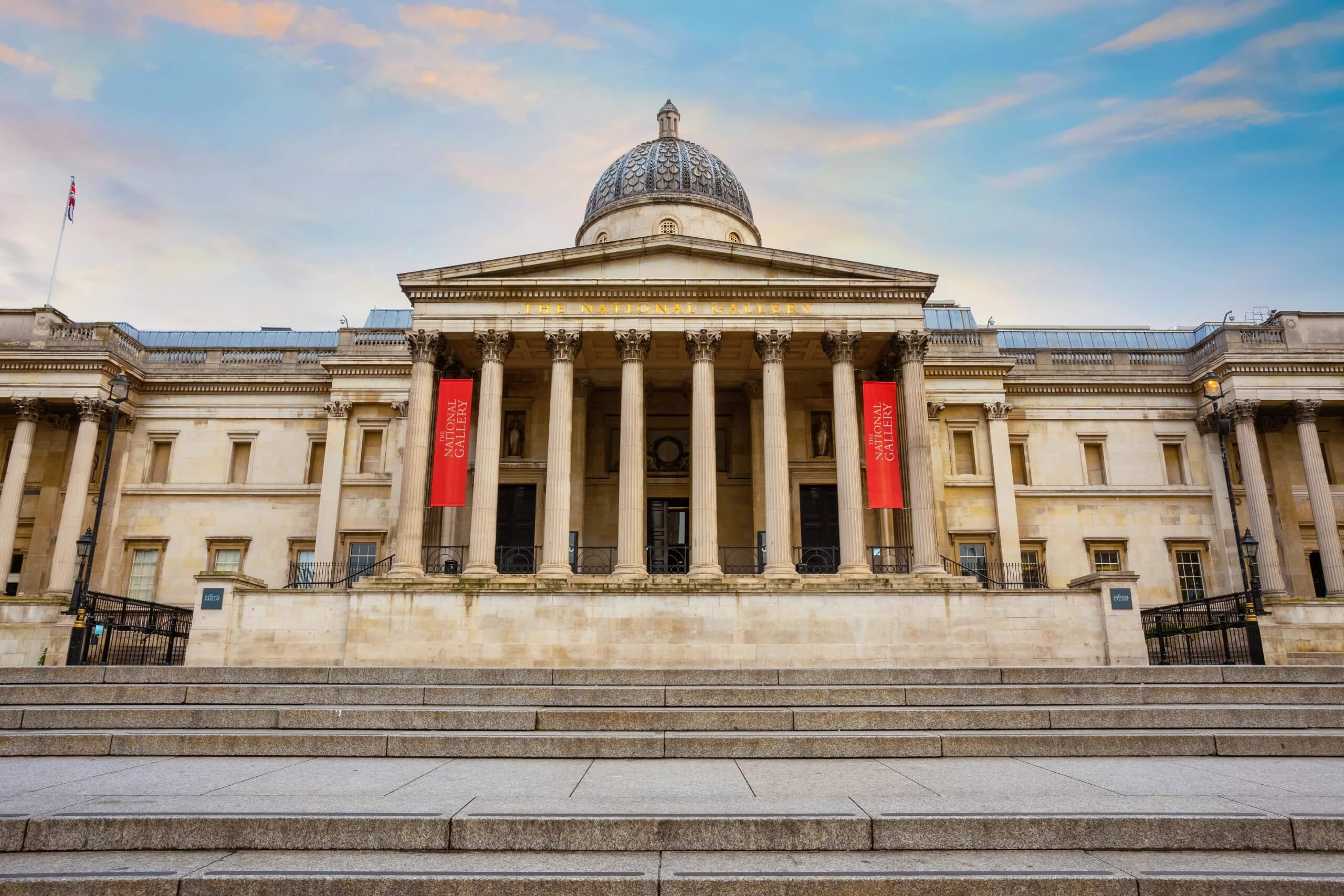The National Gallery in London, one of the world’s most renowned art museums (and my personal favorite), boasts a rich and storied architectural history that spans over two centuries. Situated in the heart of Trafalgar Square, this iconic institution has undergone numerous transformations and expansions, reflecting the evolving tastes and priorities of each era.
The origins of the National Gallery can be traced back to the early 19th century when the British government acquired a collection of 38 paintings from the estate of the wealthy banker and art collector John Julius Angerstein. This modest assemblage became the nucleus of what would eventually evolve into one of the world’s finest art collections. In 1824, the government commissioned the construction of a purpose-built gallery to house these artworks, and the architect William Wilkins was entrusted with the task.
Wilkins, a proponent of the Greek Revival style, envisioned a grand, neoclassical edifice that would evoke the grandeur of ancient Grecian temples. The result was a majestic structure adorned with a colossal Corinthian portico and flanked by two imposing wings. The interior featured a series of sky-lit galleries designed to showcase the paintings in the best possible light. Despite initial criticism, Wilkins’ design was hailed as a triumph of neoclassical architecture and set the tone for the National Gallery’s future development.
As the gallery’s collection grew rapidly in the latter half of the 19th century, the need for expansion became evident. In 1876, the esteemed architect Sir John Taylor was commissioned to design a new wing known as the Wilkins Building Extension. This addition, which mirrored the original neoclassical style, provided much-needed exhibition spaces while maintaining a harmonious aesthetic with the existing structure.

The early 20th century ushered in a new era of architectural innovation for the National Gallery. In 1975, the renowned modernist architects Sir Denys Lasdun and Sir Leslie Martin were tasked with creating a new wing to house the gallery’s ever-expanding collection. The resulting Sainsbury Wing, with its distinctive geometric forms and extensive use of concrete and glass, stood in stark contrast to the neoclassical grandeur of the original building. This bold juxtaposition of styles sparked considerable debate, yet it also showcased the gallery’s commitment to embracing contemporary architectural expression. Many voices, including Prince Charles at the time, thought the extension ruined the facade.
In the late 20th and early 21st centuries, the National Gallery continued to evolve, undergoing a series of renovations and modernizations to meet the demands of a rapidly changing cultural landscape. The most significant of these was the Millennium Building Project, completed in 2004, which transformed the gallery’s infrastructure and visitor facilities. This ambitious undertaking, overseen by the architects Dixon Jones and John Miller + Partners, introduced state-of-the-art climate control systems, improved accessibility, and created a new entrance pavilion that seamlessly integrated with the existing buildings.
Today, the National Gallery stands as a testament to the enduring power of art and architecture to inspire and captivate audiences across generations. Its architectural legacy is a remarkable tapestry woven from the threads of neoclassical grandeur, modernist daring, and contemporary ingenuity. Each addition and renovation has not only provided functional enhancements but has also contributed to the gallery’s rich narrative, reflecting the ever-evolving artistic and cultural zeitgeist of its time.
As visitors wander through the National Gallery’s hallowed halls, they are immersed in a unique architectural experience that transcends mere aesthetics. The interplay between the historical and the contemporary, the juxtaposition of styles, and the seamless integration of form and function create a multisensory journey that enhances the appreciation of the masterpieces on display. The National Gallery’s architectural history is a living, breathing embodiment of the enduring human quest for beauty, expression, and cultural enlightenment.


